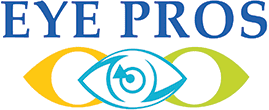How to Transition from Glasses to Contact Lenses Comfortably

Switching from glasses to contact lenses opens up a world of convenience, comfort, and freedom, but making the transition smoothly requires a bit of preparation and patience. Contact lenses offer several advantages over glasses, including a wider field of vision and flexibility for active lifestyles. However, as with any change, adapting to contact lenses takes time and the right guidance. Working with an eye doctor is essential when transitioning to contact lenses for the first time. A personalized fitting, a review of lens options, and tips for a comfortable adjustment period are all part of a successful switch. By taking the right steps and knowing what to expect, you can enjoy the benefits of contact lenses without the discomfort or uncertainty that new users sometimes experience. Let’s explore how to make this transition as comfortable and seamless as possible. Preparing for Contact Lenses Making the shift from glasses to contact lenses requires a bit of preparation to ensure the most comfortable experience possible. Starting with a fitting and consultation with an eye doctor can make a significant difference, as they’ll help you find the best lenses for your eyes and lifestyle. Steps to prepare for contact lenses: Schedule a Contact Lens Fitting A proper fitting with an eye doctor is crucial for comfort and clear vision. They’ll determine the right type of contact lens based on your prescription and eye shape. Understand Your Prescription and Lens Options Contact lenses come in various materials, designs, and wear schedules (like daily or monthly). Your eye doctor can recommend the best option for your needs, whether it’s for occasional wear or full-time use. Set a Realistic Expectations It’s normal for contact lenses to feel slightly unfamiliar at first. Understanding that there may be an adjustment period can help ease the transition and keep you motivated to stick with it. With the support of an eye doctor, these preparatory steps can help you start your contact lens journey with confidence and set the foundation for a comfortable experience. Tips for Comfortable Transition Adjusting to contact lenses doesn’t have to be uncomfortable. By taking gradual steps and following a few key tips, you can make the transition from glasses to contact lenses much smoother. Here’s how to ease into wearing contacts comfortably: Start Slowly: Begin by wearing your contact lenses for just a few hours a day, gradually increasing the time as your eyes adjust. This approach allows your eyes to adapt without overdoing it. Prioritize Hygiene: Always wash your hands with soap and water before handling your lenses to prevent eye infections. Cleanliness is crucial for maintaining comfort and eye health as you adjust. Use Lubricating Drops: Contact lenses can sometimes cause dryness, especially during the adjustment period. Lubricating drops, recommended by your eye doctor, help keep your eyes moisturized and comfortable. Stay Hydrated: Drinking plenty of water throughout the day supports eye hydration, which is beneficial when adapting to contact lenses, particularly in dry or air-conditioned environments. Blink Regularly: Many people blink less frequently when using screens, which can lead to dryness with contact lenses. Blinking more often can help keep your eyes moist, especially during screen-heavy activities. These tips, along with regular check-ins with your eye doctor, can ensure a comfortable experience as you make the switch from glasses to contacts. Taking it slow and focusing on eye care will set you up for success. Benefits of Contact Lenses over Glasses Switching from glasses to contact lenses can offer various advantages, from convenience to enhanced vision quality. For those leading active lifestyles, contact lenses are often more practical and comfortable than glasses. Here are some key benefits of making the switch: Wider Field of Vision: Unlike glasses, which only correct vision within the frame, contact lenses provide clear peripheral vision, making them ideal for sports, driving, and daily activities. No Obstruction or Fogging: Contact lenses eliminate the issues of fogging up or slipping, especially in humid or rainy conditions. This makes contacts a great choice for people who spend time outdoors or exercise frequently. Natural Appearance: Contact lenses allow you to maintain your natural appearance without frames. They’re also compatible with most types of sunglasses, providing flexibility for different looks and preferences. Comfort and Stability: With a proper fit from an eye doctor, contact lenses stay stable on your eye, providing consistent vision correction without the shifting that can happen with glasses. Freedom to Choose Colored Contacts: For those interested in changing their eye color, contact lenses offer that flexibility. Colored contacts are available for vision correction, allowing for both style and function. Consulting with an eye doctor can help ensure that your contact lenses fit comfortably and provide all these benefits, allowing you to enjoy the freedom and flexibility that contacts offer over traditional glasses. Eye Care and Maintenance for New Contact Lens Wearers Taking proper care of your contact lenses is essential, especially as you transition from glasses. Good hygiene and maintenance practices help ensure clear vision, comfort, and long-term eye health. Here are some important tips for new contact lens wearers: Follow the Replacement Schedule: Different lenses have different replacement schedules (daily, biweekly, monthly). Stick to the schedule recommended by your eye doctor to avoid discomfort and risk of infection. Clean Lenses Properly: Use fresh contact lens solution each time you clean and store your lenses. Avoid reusing or topping off old solutions, as it can lead to contamination and discomfort. Avoid Sleeping in Contacts: Unless prescribed for extended wear by your eye doctor, avoid sleeping in contact lenses, as this can increase the risk of infection and dryness. Keep Lenses Moist: Use rewetting drops throughout the day if your eyes feel dry, especially if you’re spending time on screens or in air-conditioned spaces. Replace Your Lens Case Regularly: To reduce the risk of bacterial buildup, replace your lens case every few months and rinse it with fresh solution (not water) after each use. Routine follow-ups with your eye doctor help ensure your lenses continue to fit comfortably
